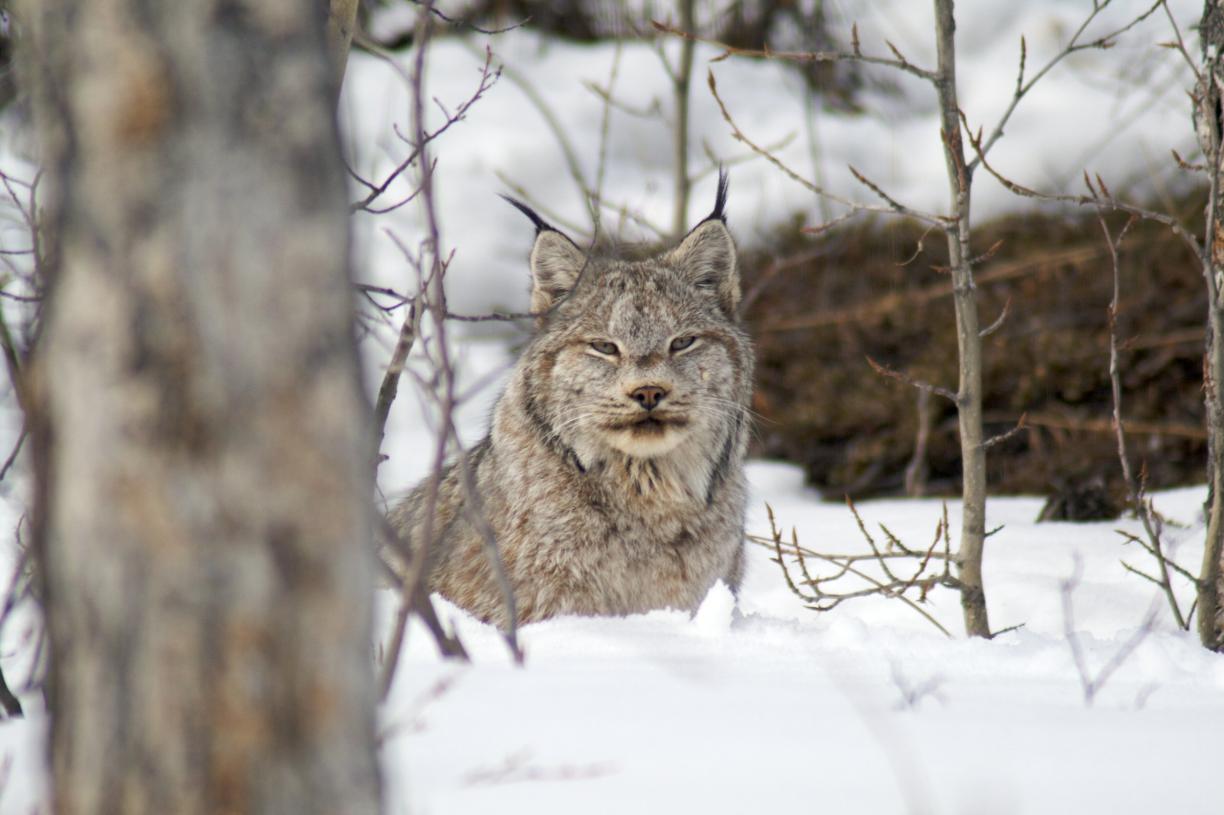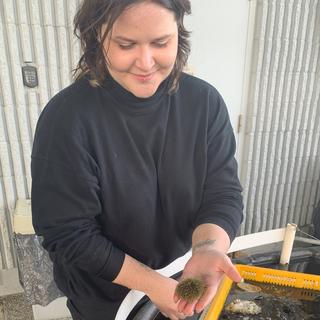Data could help governments and wildlife conservation groups understand how climate change might impact the life cycles of the Canada lynx and other species in the boreal forest.
The lynx-hare predator-prey cycle that has existed for thousands of years in North America is increasingly under threat from climate change.
“The lynx are specialist predators that rely almost exclusively on snowshoe hare for food. This has led to a tight link between the populations of the two species; as the snowshoe hare populations rise and fall over a roughly 10-year cycle, lynx populations follow suit,” says Dr. Jamie Gorrell, a VIU Biology Professor. “When hare abundance is at its peak, lynx have plenty of food and have high survival rates, causing population booms that match, but lag slightly behind, those of the hare.”
As snowshoe hare populations begin to decline, some lynx change their behaviour and begin to travel long distances, sometimes more than 1,000 kilometres, in search of food.
To understand how this cycle, which helps maintain the biodiversity of more than a dozen species in the boreal forest, could be impacted by climate change Gorrell and Dr. Evan Hersh, a VIU post-doctoral fellow, are studying the genetics of Canada lynx.
The genetic information will help researchers and conservationists understand lynx movements and connectivity among populations to identify potential habitat corridors that are essential to ensuring lynx populations remain genetically diverse.
“Genetically mixed lynx populations will in turn help lessen the impact climate change may have on the stability of the lynx-hare cycle, a process vital to the functioning of boreal and sub-boreal ecosystems,” says Gorrell.
Hersh is using genomic analyses and bioinformatics to analyze DNA samples that were collected with the help of Yukon residents, fur trappers and the Yukon Community Ecological Monitoring Program. The samples were collected at multiple phases during a 10-year cycle in hare abundance.
Hersh recently finished his PhD in plant ecology and evolution at the University of British Columbia and has extensive experience in genomic techniques. He says biologists now also need to be computer programmers to be able to crunch the huge amounts of data being generated in the genomic era.
Hersh will be comparing the genetic differences between Canada lynx from different areas. He said with newer techniques, instead of comparing a few hundred genetic markers, researchers can now compare tens of thousands of genetic markers.
“We’re hoping this thousandfold increase in the amount of data will give us the ability to figure out what is going on with their population structure. To date, no one has really applied these cutting-edge genomic techniques that produce huge amounts of data to analyze the population structure of Canada lynx within a conservation and management context,” says Hersh.
The lynx needs these huge chunks of boreal forest that are continuous, not broken into little patches. If something happens in the southern portion of the boreal region, due to human use or climate change, and the area starts getting fragmented, then lynx movement can potentially be impacted, says Hersh.
“They could have trouble passing over certain regions where there isn’t enough boreal forest for them to travel through, which could have cascading effects on hare populations and potentially disrupt the cycle.”
Hersh said if lynx and hare populations no longer follow predictable cycles, this can have tremendous impacts on the biodiversity of Boreal forests. It is estimated that the abundances of over 25 vertebrates are also regulated by this cycle. While the exact consequences of a disruption are difficult to predict, it could alter the natural patterns of genetic variation in all species that fluctuate with the cycle, which could ultimately reduce their ability to respond to future changes in their habitat and climate.
The concern is if climate change reduces the continuity of the forest and lynx can’t move as far anymore, then this could disrupt that 10-year cycle.
“This relationship between predator and prey could start to fall apart, so that’s a potential consequence of climate change that we might not expect to happen. No one knows what’s going to happen to the lynx and hare populations,” says Gorrell. “Most predator-prey relationships are generally stable over time and the abundance of predators and prey will stay relatively constant, but the lynx and hare have these huge peaks and crashes that happen like clockwork and it’s amazing how that cyclical relationship has maintained over time.”
Gorrell and Hersh will be completing their research over the next two years thanks to an Accelerate Fellowship grant for $90,000 awarded jointly from Mitacs and Bill Harrower, principal biologist at High-Country Wildlife.
-30-
MEDIA CONTACT:
Rachel Stern, Communications Officer, Vancouver Island University
C: 250.618.0373 l E: Rachel.Stern@viu.ca | T: @VIUNews
List of Project Supports/Partners
Research will be completed thanks to a grant from Mitacs and Bill Harrower, principal biologist at High-Country Wildlife.
This project is also being supported by:
- The Northwest Boreal Landscape Conservation Cooperative;
- Government of Yukon;
- Government of British Columbia;
- Wildlife Conservation Society Canada; and
- Natural Sciences and Engineering Research Council of Canada.
The Community Ecological Monitoring project includes collaboration among researchers from:
- University of British Columbia;
- University of Alberta;
- University of Toronto;
- McGill University; and
- Trent University.





